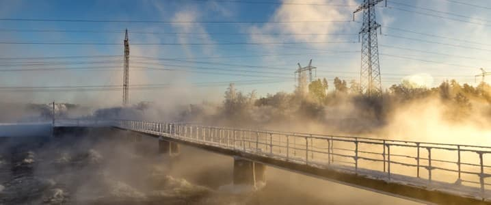Europe’s Gas Rally Reignited By Chillier Weather Predictions

European natural gas futures have reversed their steep decline after forecasts of cooler weather in the coming months increased the prospects of higher heating demand. Benchmark futures climbed as much as 4% on Tuesday’s session, before paring some gains. Dutch front-month gas traded 2.3% higher at €37.85 a megawatt-hour at 0800 hrs ET in Amsterdam, partly reversing the 12% the contract had lost over the past two sessions.
Europe’s unseasonably warm autumn has so far curbed demand for gas, but an expected cold spell in the months ahead is likely to be the first real test of the continent’s preparedness as it goes into the second winter season with minimal supplies of Russian gas.
EU gas inventories based on Gas Infrastructure Europe (GIE) data stood at 110.7 billion cubic meters (bcm) on 24 September, nearly 95% of maximum capacity and 1.3 bcm higher than the 2022 injection season maximum.
The average build over the week was 140 million cubic meters per day (mcm/d), which is 61% of the five-year average and a strong acceleration from average rates in mid-September, below 60 mcm/d.
The only country below the EU’s 1 November target of 90% storage filled is Belgium (at 89.85%). The fill rates for the main five holders of capacity are 95% for Germany, 95.7% for Italy, 96% for the Netherlands, 90.3% for France and 93.8% for Austria.
The EU’s inventory situation is so flush that it would be expected to suppress price volatility and minimize market concerns over supply availability during the northern hemisphere winter. However, volatility in the markets remains elevated.
Meanwhile, the risk of industrial action at Australian LNG plants has lessened after strikes were called off at the two major Gorgon and Wheatstone facilities with market attention shifting to
Norwegian outages. With European markets flush with gas, there’s considerable downside risk the expected cold weather fails to materialize.




